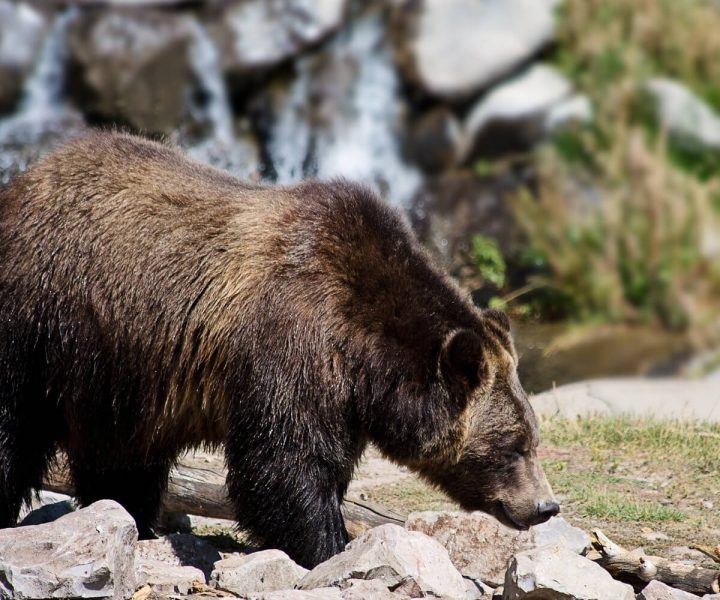
Bear spray is a standard and essential tool for whenever you’re hiking or camping in the backcountry or somewhere with a high bear population. While it may have taken up permanent residency in your pack, how much do you actually know about the spray?
We cover all the important things you need to know, including advice on how to choose the right kind of spray, as well as when and how to use it in a real-life situation. So, before you head off on your next adventure in bear country, have a read through our guide and make sure you are well prepared in case you should ever need your spray. (Or watch this video from the National Park Service.)
Not all bear sprays are the same
The best bear sprays will have a properly engineered nozzle, a quality can, and an atomized propellant. Whenever you’re in the market for a bear spray, look for one that has a combination of all three, as the quality of the spray is decreased if it’s missing one of these elements.
Also, don’t be fooled by a bear repellent that claims to have more capsaicin or be hotter than pepper spray. These kinds of sprays could be less capable of producing a functional protective cloud, as they may be thicker, and therefore not as potent.
Look for a bear spray that is EPA registered
All bear sprays in today’s market claim to deter bears and protect you against an attack. But, unless the brand and spray have been regulated by the EPA (Environmental Protection Agency), there’s no way to be sure that the spray has been tested, or that its ingredients are useful. Along with being EPA approved, the bear spray should have a level of capsaicin and related capsaicinoids of at least 1% to 2%.
When shopping for a bear spray in online stores, double and triple check that it’s EPA registered. It’s next to impossible to find a non-EPA bear spray in brick and mortar stores, but they’re more abundant online.
The spray duration should be at least 5 seconds long
When a bear (or bears, in a worst case scenario) are coming towards you, there are a lot of variables you need to account for, including distance, velocity, and the direction of the wind. A four-second spray duration can give you enough of a cloud to deter the charging bear, but a five-second span will mean you can quickly and efficiently empty the contents of the can.
Cold temperatures affect bear spray
This is essential information to know if you are hiking during the winter or at colder temperatures. If your bear spray can is at a temperature of 40 degrees Fahrenheit or below, the spray distance will be reduced, or it could be completely ineffective.
Try to keep your bear spray as warm as possible; never store it outside overnight and always keep it with you inside your tent. When you’re out hiking, carry the spray under your jacket, preventing it from getting too cold.
What to do if you encounter a threatening bear
To efficiently deploy the bear spray, you need right timing and some patience. The best bear sprays will have a range of 25 to 30 feet, so spraying too early will mean the risk of wasting your can.
If you see a bear looking at you from a distance, but not charging, just back away slowly without running. While backing away, deploy short bursts, as the sight of the red pepper cloud, and the sound of the spray could be sufficient in scaring away the bear.
Encountering a charging bear
This is it. The bear has stopped just being curious about you and has started charging. So how do you respond? That all depends on the distance between the two of you.
At 60 feet: You need to deploy the bear spray when the bear is around 60 feet from you, so press the trigger and aim your cloud towards the bear’s face. What you want to do is create a protective cloud between you and the bear, stopping the attack.
At 30 feet: If the bear starts to charge when it’s only around 30 feet away from you, spray directly at the face of the bear until it stops charging. Don’t expect the bear to stop immediately, as the effects of the spray can take a couple of seconds for the bear to feel.
Close encounter: You’re unlucky enough to scare a bear within 15 feet of you, or a bear is poking its head inside your tent. The momentum of the bear will be enough to knock you down, so you need to aim the spray directly at their face.
Whenever traveling to bear country, have fun, and enjoy all that nature has to offer. You might be lucky enough to spot a few bears at a safe distance, but just in case, make sure and have at least two cans of bear spray in your pack, as it might mean the difference between life and death.
 Your Privacy Choices
Your Privacy Choices